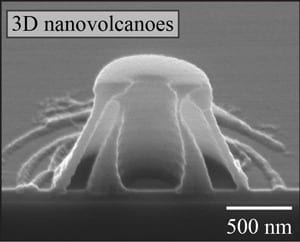
A significant step on the path to quantum computing has been taken by an international team of researchers applying a 22-year old theory. They have succeeded in creating quantum bits within a semiconductor for the very first time.
Classical bits can be assigned one of only two values which are typically used to reflect on or off, true or false, yes or no, and other binary states. In each of these cases, the first, positive state is typically represented by a 1, and the second a 0 (the word bit is itself a contraction of binary digit – binary numbers consisting of strings of 1s and 0s). In current electronics devices, the 1s and 0s are conveyed by voltage variations.
Like a classical bit, quantum bits (or qubits) take on values of 0 or 1, but unlike a classical bit, a qubit can assume both values simultaneously, and to varying degrees, through what is known as superposition. Superposition allows a qubit to be assigned the value of a complex variable, and this promises to one day significantly increase the computational power of computers – especially when tackling certain types of problems in fields including encryption and quantum research.
But qubits are fickle things, having a tendency to lose superposition under observation (recall Schrödinger and his unfortunate cat). Until this latest breakthrough, qubits had only been successfully created in large vacuum chambers. But by using a theory proposed 22 years ago by physicist Prof. Dr. Andreas Wieck of the Ruhr University Bochum (RUB), researchers have used a dual-channel system to create qubits in a semiconductor.
via Gizmag – James Holloway ᔥ
Bookmark this page for “Drone Arms Race” and check back regularly as these articles update on a very frequent basis. The view is set to “news”. Try clicking on “video” and “2” for more articles.









